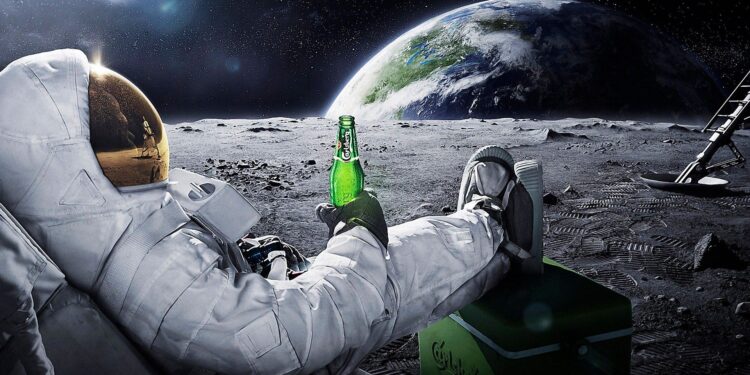Virgin Galactic, SpaceX, and Blue Origin are just three of the companies poised to offer space missions to private astronauts for space travel.
What Space Tourists Can Expect
What exactly is in store for space tourists? The excitement of a rocket ride and a chance to experience weightlessness, for starters. And the bragging rights are hard to beat. But some say the biggest benefit of going into space is getting a dramatic new outlook on life on the fragile blue marble we call home. It’s a perspective shift that could have profound implications not just for individuals but also for society at large
Have you ever wanted to go to space?
Is it your dream to leave Earth behind and travel the cosmos? These days getting to space is becoming more of a reality for non-astronauts, even if the cost of doing so remains astronomical.
Go back 60 years and the idea of anyone going into space was little more than a dream. Today, more than 550 people have achieved this ambition, journeying beyond our planet and into low Earth orbit. For decades it’s been governments footing the bill for training and flying astronauts, but that could all be about to change as space tourism becomes more of a reality over the coming years. Private spaceflight is on the verge of being able to regularly carry private passengers into space, allowing anyone who wants to travel to the stars to do so – provided they have the money, that is.
Here’s what 2023 may entail for the global space industry:
The rise of private astronauts
10 years ago, if we spoke about the concept of private citizens, forming a group and travelling to space, people would have called us all sorts of crazy and laughed at us. However, in 2022, four astronauts travelled to the International Space Station on Axiom Space’s Ax-1 mission and approximately 20 people entered suborbital space on Jeff Bezos’ New Shepard rocket from Blue Origin. These figures are only going to increase in 2023.
Getting into space: your options
Visit the International Space Station

Axiom will undertake its second private launch to the ISS early next year in addition to Polaris Dawn, the billionaire Jared Isaacson’s private spaceflight programme, launching on its first mission. We already had a bunch of space startups talking about space hotels or privately owned and operated space stations this year. The discussion is only going to get louder on that front. However, don’t anticipate any significant progress until businesses find out how to make the venture profitable and sustainable.
Smaller, but many more launches
While we will be paying attention to the launch of heavy-lift rockets like SpaceX’s Starship and United Launch Alliance’s Vulcan rockets, the focus will primarily be on the n number of smaller and medium-lift launch vehicles with a focus and cheap cost. These include the, the Rocket 4 from Astra, the RS1 from ABL Space Systems, the Terran 1 from Relativity, and a whole other bunch of other startups, too many to count actually. Timelines in the space business are notoriously difficult, but it’s probable that at least a few new rockets will make their first flight next year.
The Cost of Space Flight Before and After SpaceX
If your budget can stretch to the billions rather than the millions, however, you can always approach private space exploration companies direct for something a little more bespoke than an off-the-shelf flight.
On December 21, 2021, SpaceX’s Falcon 9 rocket launched a cargo capsule to deliver supplies and Christmas gifts to astronauts in the International Space Station.
Just eight minutes after liftoff, the rocket’s first stage returned to Earth, landing on one of SpaceX’s drone ships in the Atlantic Ocean. This marked the company’s 100th successful landing.
Like other companies such as Jeff Bezos’ Blue Origin, and Ball Aerospace, SpaceX is designing and building innovative spacecraft that are speeding up space delivery by making it more routine and affordable. But how much does it cost to launch a cargo rocket into space, and how has this cost changed over the years?
In the graphic above we take a look at the cost per kilogram for space launches across the globe since 1960, based on data from the Center for Strategic and International Studies.
The Space Race
The 20th-century was marked by competition between two Cold War adversaries, the Soviet Union (USSR) and the United States, to achieve superior spaceflight capability.
The space race led to great technological advances, but these innovations came at a high cost. For instance, during the 1960s NASA spent $28 billion to land astronauts on the moon, a cost today equating to about $288 billion in inflation-adjusted dollars.
In the last two decades, space startup companies have demonstrated they can compete against heavyweight aerospace contractors as Boeing and Lockheed Martin. Today, a SpaceX rocket launching can be 97% cheaper than a Russian Soyuz ride cost in the ’60s.
Take a trip around the Moon

Credit: Patrick T. Fallon/Bloomberg via Getty Images
Space X is currently working with Japanese billionaire Yusaku Maezawa on such a mission, called #dearmoon, which will send 6 to 8 passengers on a flight around the Moon.
Maezawa is even giving away his seats, but you’ll have to be a world-class artist to stand a chance of getting one; his plan is for all the passengers to create works of art attempting to convey the experience of being in space to the world.
Reach ‘outer space’ with Virgin Galactic

At the other end of the fee scale, relatively speaking, is the option of taking a sub-orbital flight with Virgin Galactic.
The company promises passengers three things: to cross the boundary into outer space 100km above Earth’s surface; to let them see the curvature of Earth and at least 5 minutes of free-floating weightlessness.
After years of postponements, founder Richard Branson has announced that he hopes to take his own first flight in early 2021, before working down the list of 600 people who have purchased a ticket at the early-bird price of $250,000.
Become an astronaut

While it’s nice to daydream, the reality is that most of us could never afford even the 6-figure option. There is one more possibility, however: to become a professional astronaut.
All you need is excellent physical health; a master’s in physical science, engineering, or medicine; several years of work experience; a decorated military history; or over 1,000 hours of flight experience. Easy, eh?
If you’re applying to NASA, which selects around a dozen candidates every few years, then you’ll need to have US citizenship. For more on this, read the guide to becoming a NASA astronaut.
For Europeans, there might be a bit more of a fight, as the European Space Agency (ESA) hasn’t selected a new class of astronauts since 2008 when 8,414 people applied for just 6 places.
Rumour has it that the agency will be sending out a call for new astronauts in 2021, so it might be time to start working on the CV. For more on this, read the ESA guide to becoming an astronaut.
Which non-astronauts have been to space?

In 1984, American citizen Charles D Walker became the first non-government sponsored person to reach space. His employer, aerospace company McDonnell Douglas, paid for him to fly on three Shuttle missions.
NASA charged just $40,000 per flight, though the company spent around $20 million of its own money training him.
Most private spaceflights, however, were not flown on NASA’s Space Shuttle but on the Russian Soyuz.
In the 1990s, the Soviet Union’s wider financial problems left its space agency with a shortfall in its ledger, making it more than willing to accommodate paying customers.

In 1990, a Japanese broadcasting company paid for reporter Toyohiro Akiyama to fly to the Mir space station, and a few years later Helen Sharman had her flight paid for by various sponsors, becoming the UK’s first astronaut.
In 1998, Space Adventures began working with the Russian space agency to broker future flights to the International Space Station (ISS).
Since then, the company has trained and flown seven individuals, including the second person to wear the British flag in space, gaming entrepreneur Richard Garriott.
In all these flights, the individuals did more than just float around, looking at the view. Instead, they helped to conduct research and experiments, or put on outreach events to educate those back on Earth.
Ezzy Pearson is BBC Sky at Night Magazine’s News Editor. This guide originally appeared in the November 2020 issue of BBC Sky at Night Magazine.


















